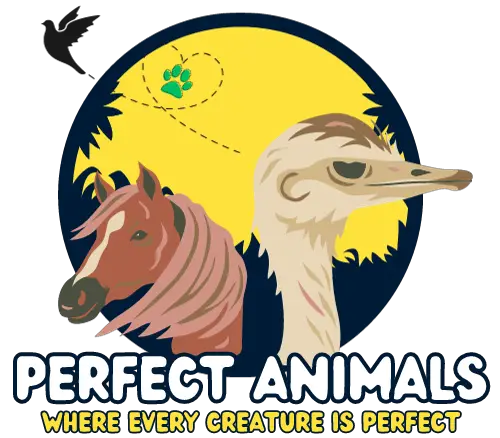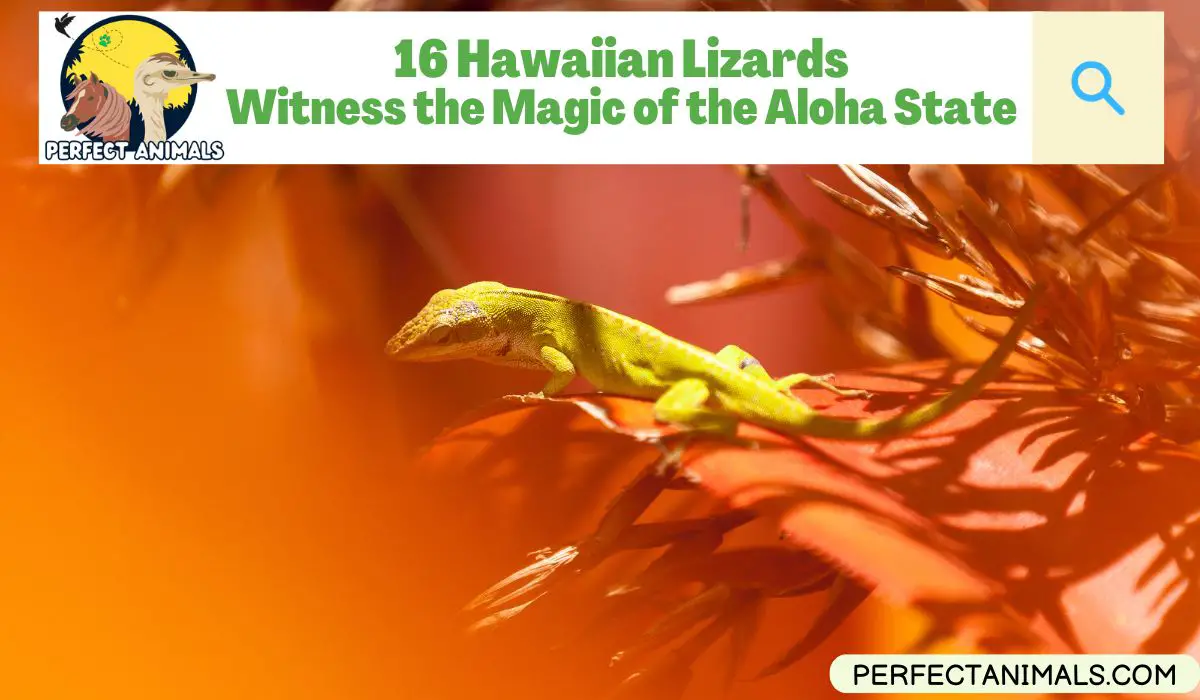The Hawaiian islands are home to an incredible diversity of reptiles, including many fascinating and colorful lizard species.
For reptile enthusiasts visiting Hawaii, spotting these lizards can be fun and rewarding.
In this article, we’ll highlight some of the most common and interesting lizards that call Hawaii home.
From tiny geckos to large iguanas, Hawaii’s lizards come in all shapes and sizes.
We’ll discuss their key features, habitats, and how to spot them in the wild.
Whether hiking through the lush forests or strolling the beaches of Hawaii, keep an eye out for these remarkable reptiles.
Our guide will help you identify and learn more about Hawaii’s unique lizard fauna.
Why Are There So Many Lizards in Hawaii?
Hawaii is home to an abundance of lizards due to its warm, tropical climate and isolation from other land masses.
The Hawaiian islands formed volcanically rather than separating from a continent, which allowed lizards to colonize the islands through various means of dispersal.
Throughout history, lizards have reached the islands by floating on debris across the ocean, hitching rides aboard canoes with Polynesian settlers, or stowing away in cargo holds of ships.
Without predators, lizards were able to thrive and diversify in Hawaii’s favorable habitat.
The tropical climate provides ideal conditions for lizards, with year-round warmth and food sources like insects and fruit.
Additionally, Hawaii’s remote location allowed lizards to colonize without much competition from other reptiles.
This combination of factors has allowed nearly 50 species of lizards to become established in the island chain.
The abundance and diversity of Hawaiian lizards make spotting these colorful creatures a distinctive part of the island experience.
Hawaiian Lizards | Types of Lizards in Hawaii
Hawaii is home to a wide variety of fascinating lizard species. Here we’ll introduce some of the most common and unique types of lizards found across the islands.
The Gold Dust Day Gecko
The Gold Dust Day Gecko, also known as Phelsuma laticauda, is a diurnal species of gecko that is native to northern Madagascar, Tanzania, and the island of Comoros.
It has also been introduced to Hawaii and other Pacific islands.
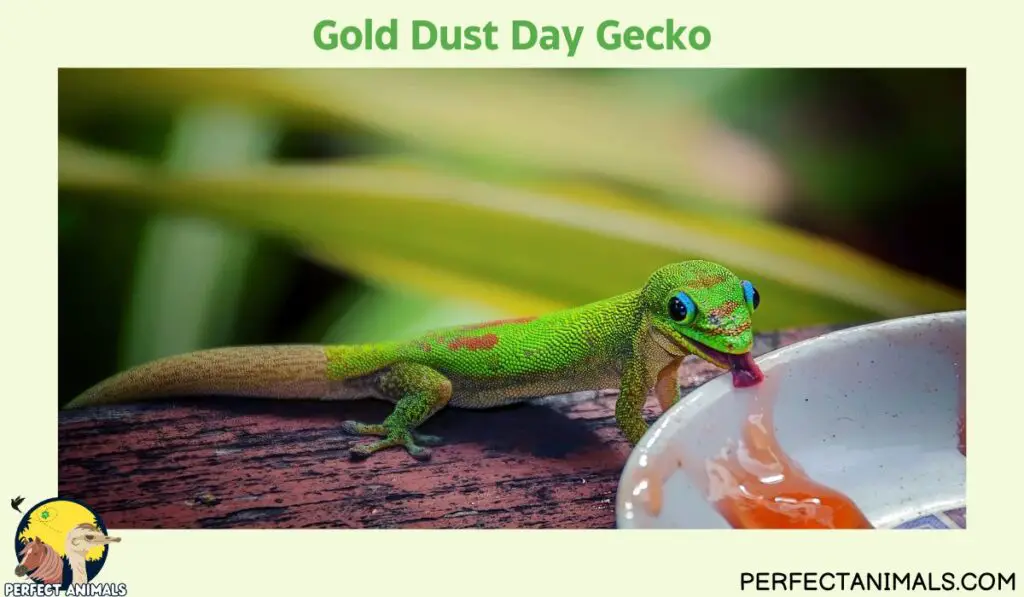
Appearance – These geckos are primarily green in color, with red spots between their eyes and nose and in the middle of their back.
They get their common name from the beautiful gold speckling they develop on their necks, legs, and hindquarters down the length of their tails.
A few exceptional animals may even have blue toes.
Size – Gold Dust Day Geckos generally grow 3.9-5.1 inches (10-13 cm) long.
Habitat – Gold Dust Day Geckos are arboreal and prefer tropical forest habitats. They are typically seen in houses and various trees.
Behavior – These geckos are diurnal and social, often congregating in groups of many individuals when feeding off of one plant.
The males of this species are rather aggressive and can be quite quarrelsome.
They do not accept other males in their territory.
Diet – Gold Dust Day Geckos are omnivores, feeding on various insects and other invertebrates, as well as soft, sweet fruit, pollen, and nectar.
Care – In captivity, Gold Dust Day Geckos should be provided with a lush, tropical environment and misted with water at least twice a day to increase the humidity within their cage.
They require high-quality lights to maintain their beautiful coloration.
Lifespan – With good care, Gold Dust Day Geckos may live up to 15 years.
Related Article – Chinese Cave Geckos
Common House Gecko
The Common House Gecko, also known as Hemidactylus frenatus, is a small lizard native to Southeast Asia. It has been introduced widely across the world.
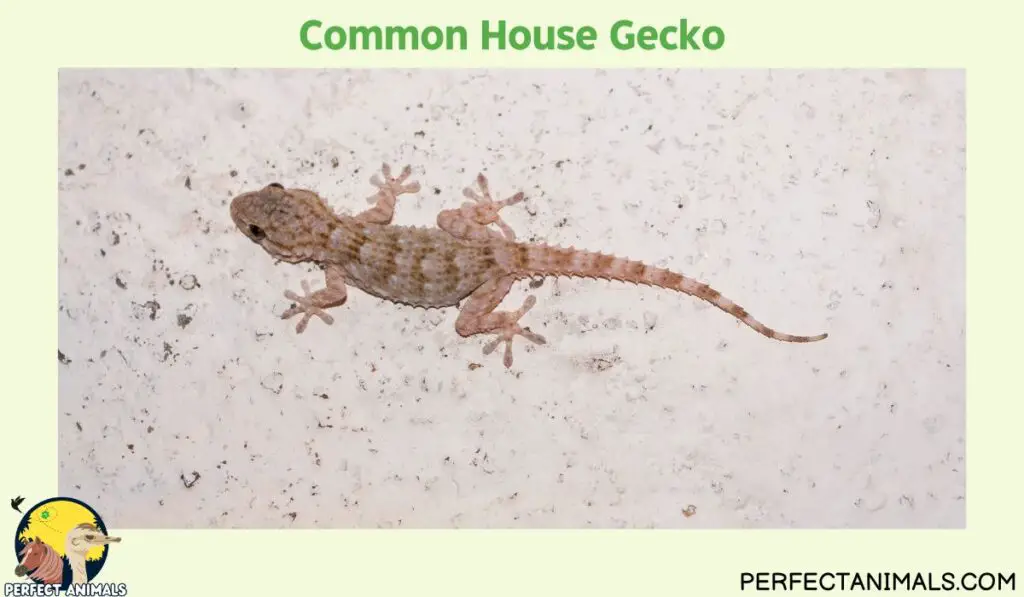
Appearance – Common House Geckos are small, typically growing 3-6 inches (7.5-15 cm) long.
They have an elongated snout and tapered tail.
Their color ranges from pinkish to grayish, often with darker splotches. Their underside is creamy-white.
Habitat – Common House Geckos prefer urban areas and human dwellings.
Without access to cities, they inhabit forests, fields, savannas, and deserts.
Behavior – These nocturnal geckos are most active at dusk and dawn. They are solitary and territorial.
They thermoregulate during the day and forage at night. They may bite if distressed but their bite is gentle.
Diet – Common House Geckos eat insects like moths, cockroaches, and other small invertebrates.
Range – They are found worldwide due to human introduction and have been reported across the Pacific, Asia, Africa, the Americas, and more.
Impact – Common House Geckos often displace and outcompete similar small, urban-adapted gecko species.
Care – Captive Common House Geckos should be captive-bred, not wild-caught. With proper care, they can make interesting pets.
You May Also Like – Timor Monitor Care Guide
Madagascar Giant Day Gecko
While the Gold Dust Day Gecko and the Madagascar Giant Day Gecko look similar, the Madagascar Giant Day Gecko can be distinguished by the vibrant red stripe that runs from its nostril to behind the eye, whereas the Gold Dust sports transverse bars across the snout and head.
The Madagascar Giant Day Gecko, also known as Phelsuma grandis, is a diurnal arboreal species of day gecko that is native to eastern Madagascar.
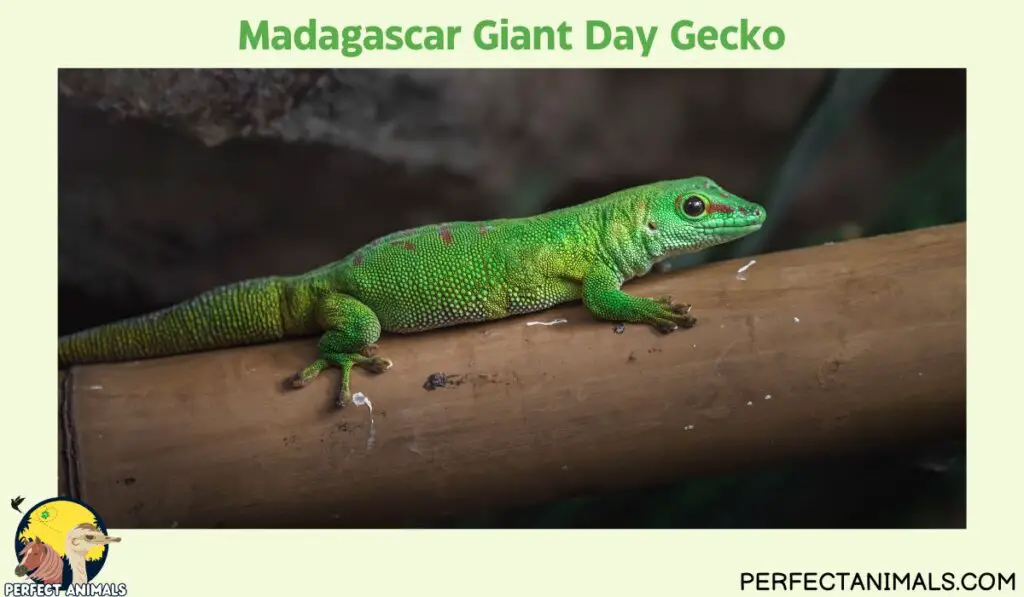
Appearance – Madagascar Giant Day Geckos can grow up to 12 inches (30 cm) long, making them one of the largest geckos in the world.
They have a light green to bluish-green body with red-brown dots or bars on their back.
A signature red stripe extends from their nostril to behind the ears.
Their large, round eyes are circled in bright blue and they have creamy white undersides.
Habitat – These geckos inhabit trees in tropical forests, grasslands, and agricultural areas of Madagascar.
They are arboreal and require tall enclosures with ample climbing opportunities.
Behavior – Madagascar Giant Day Geckos are diurnal and territorial.
Their coloring helps camouflage them among leaves and branches. They are active lizards requiring sufficient space.
Diet – They eat a variety of insects, small invertebrates, and occasionally sweet fruits.
Care – In captivity, they need a warm, humid vivarium with a basking area of 80°F (27°C) and ample broad leaves, plants, and climbing areas.
Lifespan – With proper care, they can live 8-15 years.
Madagascar Giant Day Geckos are sometimes kept as pets but should always be captive-bred, not wild-caught.
You May Also Like – Bearded Dragon Shedding
Veiled Chameleon
The Veiled Chameleon is an arboreal lizard native to Yemen and Saudi Arabia.
It gets its name from the bony casque on its head which channels water into its mouth. Its body has vivid green, yellow, and brown banding.
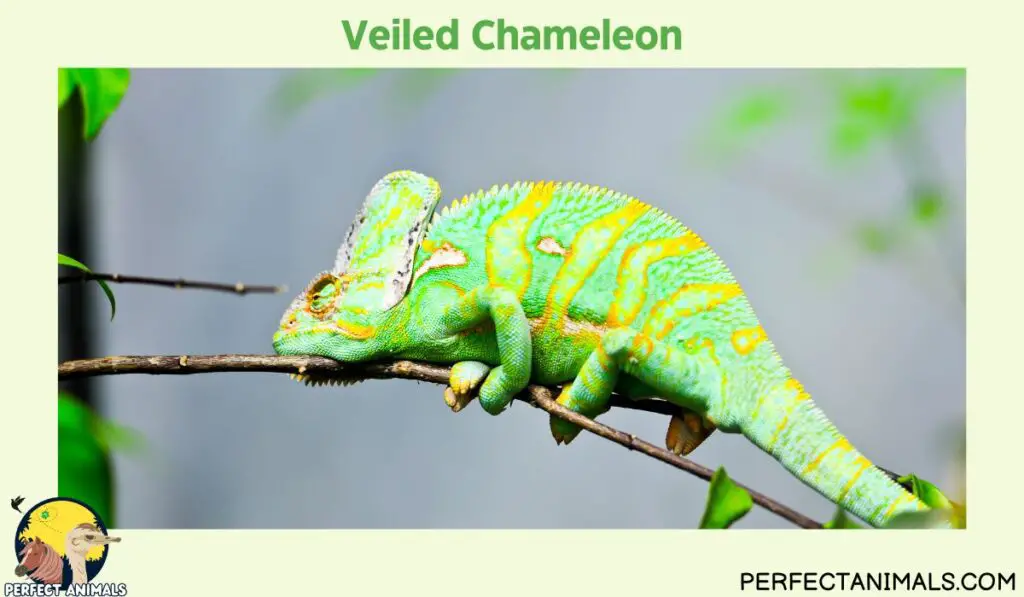
Habitat – Veiled Chameleons live high up in trees or lower in bushes and shrubs.
They thrive in plateaus, mountain forests, and valleys of their native range.
Behavior – These solitary, territorial lizards should be housed alone.
They can be aggressive toward other chameleons.
Usually docile with people, handling causes them stress so they are better as display pets.
Diet – Veiled Chameleons are omnivores that eat a variety of insects along with smaller amounts of fruit and vegetables.
Their long, sticky tongue can reach two times their body length to catch prey.
Care – They need an enclosure with ample climbing areas and plants misted twice daily to maintain around 50% humidity.
Daytime temps should be 72-80°F with a basking spot of 85-95°F provided by overhead heating lamps.
Lifespan – In captivity, Veiled Chameleons generally live 6-8 years with proper care.
Veiled Chameleons are common pets but need attentive care and veterinary checks for parasites to remain healthy. Captive-bred specimens are best.
Orange Spotted Day Gecko
The Orange Spotted Day Gecko, scientifically called Phelsuma guimbeaui, is a diurnal gecko native to the western coast of Mauritius.
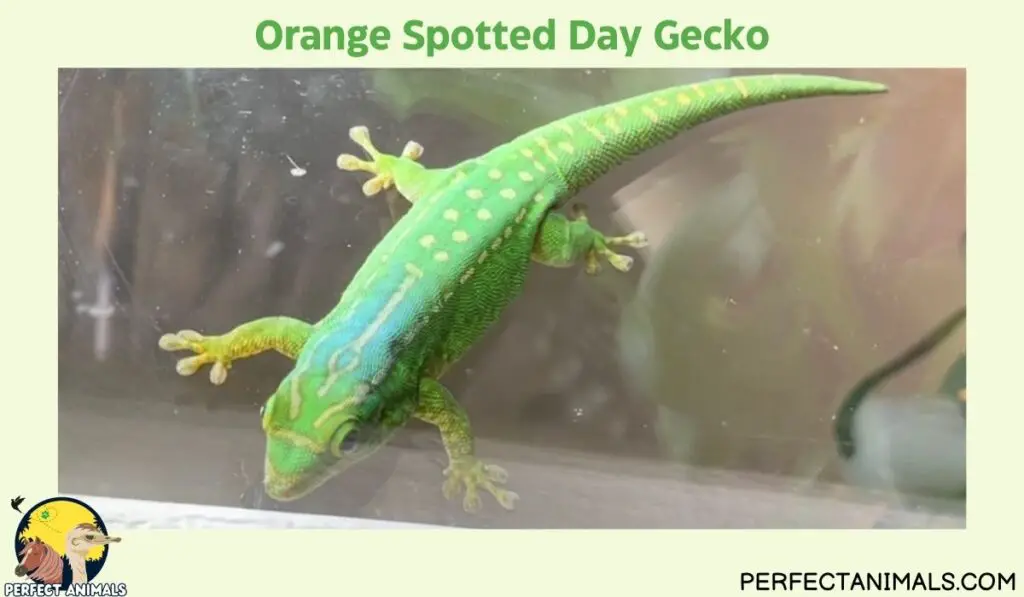
Appearance – Orange Spotted Day Geckos are medium-sized, with males reaching 6.1 inches long and females 3.5-5.1 inches.
They have a brilliant green body with a blue neck area.
Their backs and tails have irregular orange-red spots and bars, and the tail tip may be blue. Their underside is yellowish-white.
Habitat – These geckos inhabit large tropical forest trees in their native range.
Behavior – Orange Spotted Day Geckos are diurnal and shy due to heavy predation by birds. They tend to be docile and not aggressive.
Diet – They eat insects, invertebrates, fruit, nectar and pollen.
Care – Captive geckos need a warm, humid vivarium with an 80°F basking area and ample climbing areas.
Their enclosure should be misted frequently and have broad leaves and plants.
Lifespan – With proper care and captive breeding, Orange Spotted Day Geckos can live 6-8 years.
Orange Spotted Day Geckos can make interesting pets when captive-bred.
Wild-caught specimens should be avoided to protect this species.
You May Also Like – Bearded Dragon Tail Rot
Small Tree Gecko
The Small Tree Gecko, scientifically called Hemiphyllodactylus typus, is a small gecko species native to Southeast Asia.
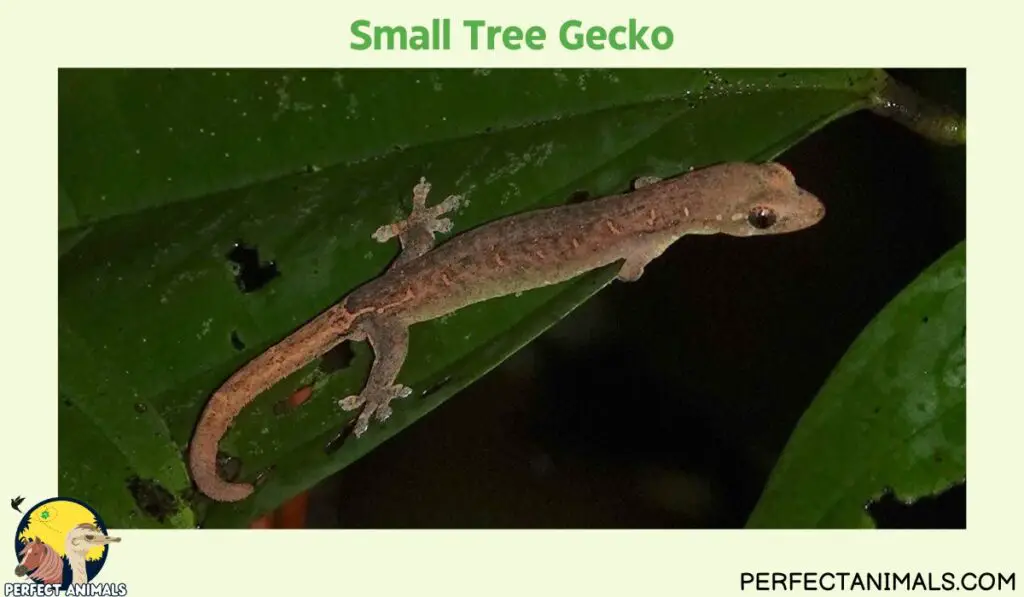
Appearance – Small Tree Geckos are petite, growing 2.2-3.5 inches long.
They have slender bodies, proportionally short legs, and pale grayish-white coloration with tiny granular scales.
Habitat – These arboreal geckos inhabit trees, bushes, shrubs, forests, grasslands, and agricultural areas.
Behavior – Small Tree Geckos are nocturnal and most active at night.
They tend to be docile but handling them causes stress. They are better as display pets.
Diet – These geckos eat small insects and spiders.
Care – In captivity, they need a warm, humid vivarium with an 80°F basking area and ample climbing areas. Their enclosure should be misted frequently and have broad leaves and plants.
Lifespan – With proper care and captive breeding, Small Tree Geckos can live 6-8 years.
Small Tree Geckos can make interesting pets when captive-bred. Removing them from the wild should be avoided.
Indo-Pacific Gecko/Fox Gecko
The Indo-Pacific Gecko, scientifically Hemidactylus garnotii, is also known as the Fox Gecko due to its long, narrow snout. This small gecko is native to Southeast Asia.
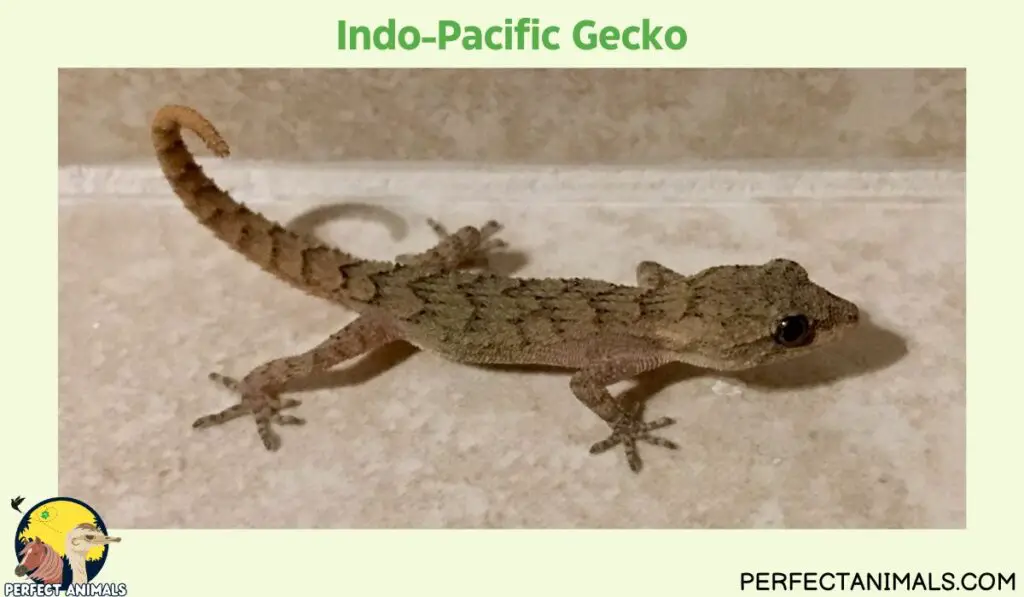
Appearance – Indo-Pacific Geckos grow 4-5 inches long. They have a pointed snout and gray to brownish coloration with light markings during the day.
At night they become pale and translucent.
Habitat – These geckos thrive around human habitats and are rarely far from buildings with outdoor lighting. They inhabit forests, grasslands, and agricultural areas.
Behavior – Indo-Pacific Geckos are nocturnal and most active at night. They tend to be docile but handling them causes stress, so they are better as display pets.
Diet – They eat small insects, spiders, and other invertebrates.
Care – In captivity, they require a warm, humid vivarium with an 80°F basking spot and ample climbing areas.
Lifespan – With proper captive care and breeding, Indo-Pacific Geckos can live 6-8 years.
You May Also Like – Pink Belly Sideneck Turtles
Tokay Gecko
The Tokay Gecko, also known as the Gekko gecko, is a large, nocturnal arboreal gecko native to parts of Asia and some Pacific Islands.
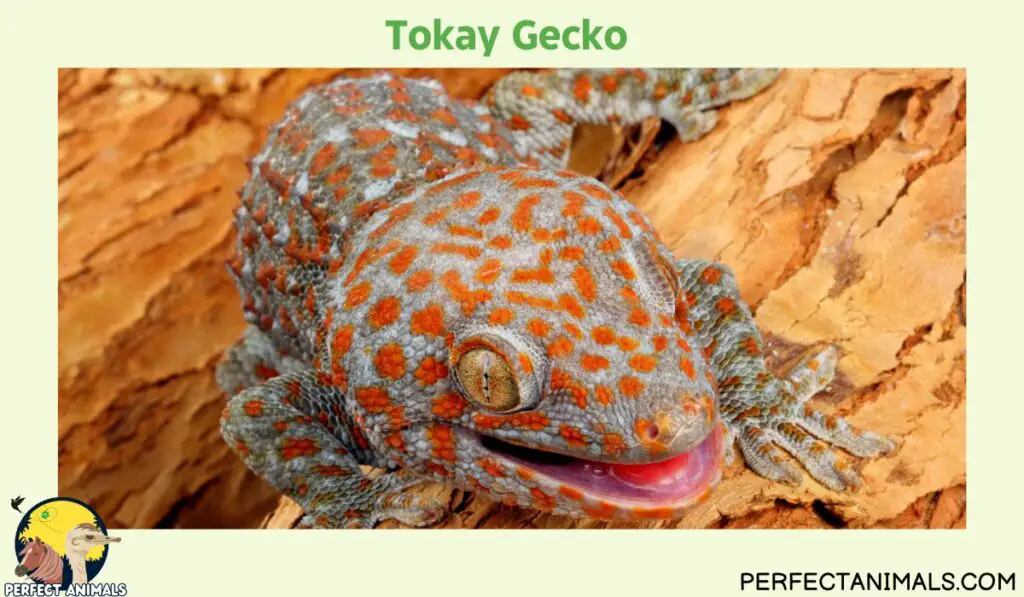
Appearance – Tokay Geckos are among the biggest gecko species. Males reach 13-16 inches long, while females are 8-12 inches.
They have a long, pointed snout and typically greyish-brown coloration with light markings.
At night they become pale and translucent.
Habitat – Being arboreal, Tokay Geckos live high up in trees as well as among bushes and shrubs on the forest floor.
They inhabit tropical and subtropical forests, plantations, and human dwellings.
Behavior – Tokay Geckos are nocturnal and territorial. They will defend their space from other geckos.
They tend to be docile with humans but handling causes them stress.
Diet – Tokay Geckos are insectivores that prey on insects, spiders, small vertebrates, and more. They have strong jaws to crush hard shells.
Care – in captivity, Tokay Geckos require a large, warm, humid vivarium with ample climbing areas.
Misting the plants and providing an 80°F basking spot are recommended.
Vocalizations – Tokay Geckos are very vocal, especially in the breeding season. Their loud croaking “tokay” call is distinctive.
Lifespan – With proper care and captive breeding, Tokay Geckos can live 10-20 years.
Stump-Toed Gecko
The Stump-Toed Gecko, scientifically named Gehyra mutilata, is a small gecko species native to Southeast Asia.
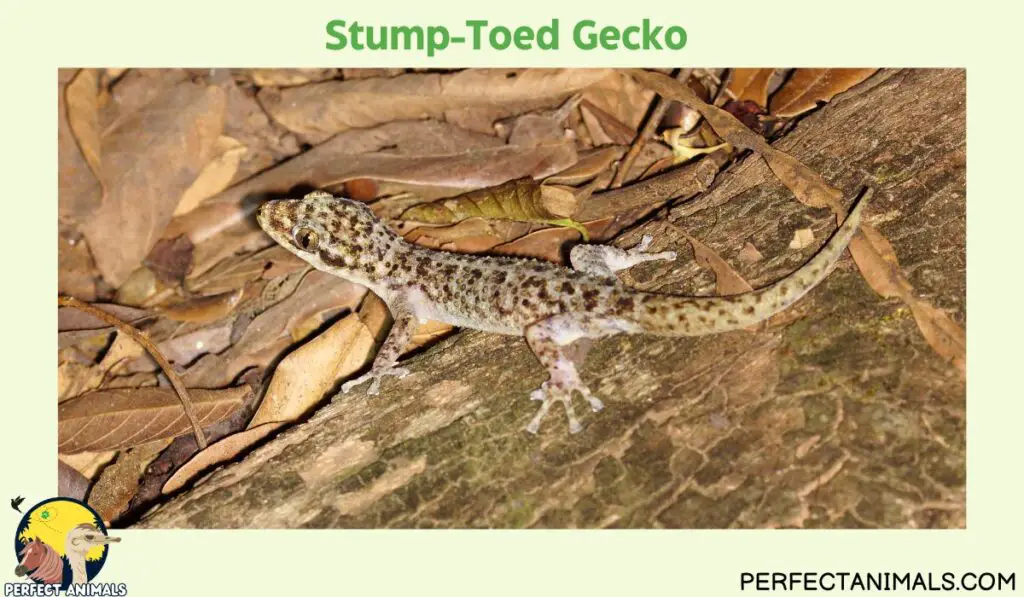
Appearance – Stump-toed geckos grow about 3-4 inches long. They have slender, light grayish bodies with tiny granular scales and short legs.
Habitat – These adaptable geckos inhabit woodlands, rocky areas, human dwellings, and more, from sea level up to 4,600 ft altitude.
They are invasive on Hawaii’s beaches.
Behavior – Stump-toed geckos are nocturnal and generally docile, but handling them causes stress. Their vocalizations sound like “tock” repeated 6-8 times.
Diet – They are insectivores that eat small insects, spiders, and other invertebrates.
Care – In captivity, they need warm, humid enclosures with basking area of 80°F and ample climbing opportunities. Regular misting and ventilation are required.
Lifespan – With proper husbandry and breeding, captive Stump-Toed Geckos can live 6-8 years.
Cuban Knight Anole
The Cuban Knight Anole, scientifically Anolis equestris, is the largest species in the Anole family.
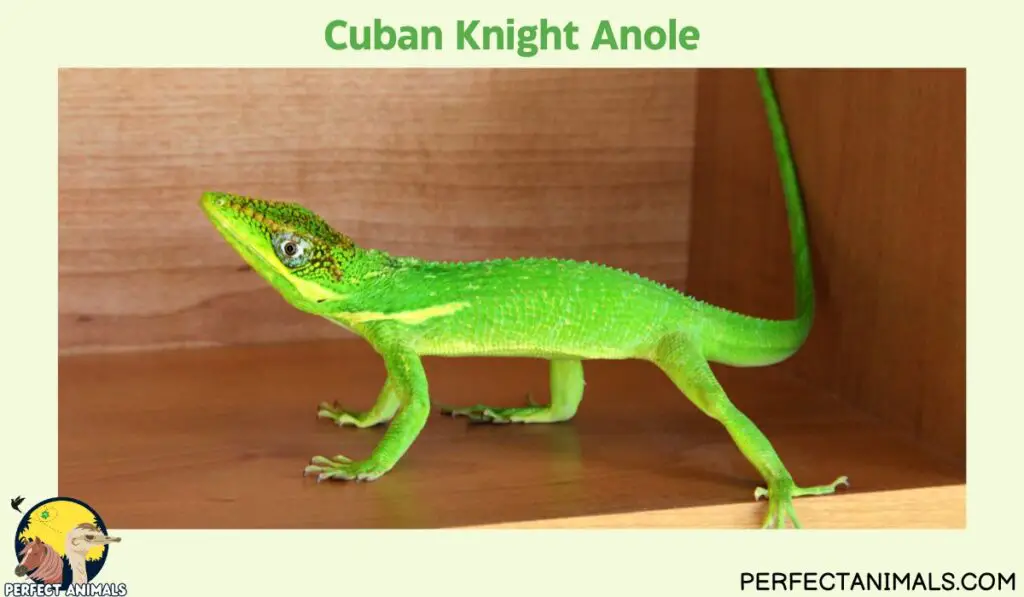
Appearance – Cuban Knight Anoles grow 13-19 inches long. They are mostly bright green with yellow stripes on the head and shoulder.
They have a pinkish-white dewlap and juveniles have light bands on their bodies.
Habitat – These arboreal lizards inhabit tree canopies and branches in their native Cuba. They’ve been introduced in Florida where they thrive invasively.
Behavior – Cuban Knight Anoles are diurnal and typically docile but can be defensive when threatened. They prefer shady canopies of large trees.
Diet – In the wild, they eat insects like grubs, crickets, cockroaches, spiders, and moths.
Captive anoles can eat insects, mealworms, and small lizards.
Care – In captivity, they require a warm, humid vivarium with ample climbing areas and an 80°F basking spot. Regular misting and ventilation are needed.
Growth – With proper care, they can reach a full adult size of 16-18 inches within two years.
Lifespan – Captive-bred Cuban Knight Anoles can live 10-15 years with appropriate husbandry.
Related Article – Getting a Cuban False Chameleon? Read This NOW!
Jackson’s Chameleon
Jackson’s Chameleon is a medium-sized chameleon species native to the forests and thickets of East Africa. It has been introduced in Hawaii, Florida, and California where it can become invasive.
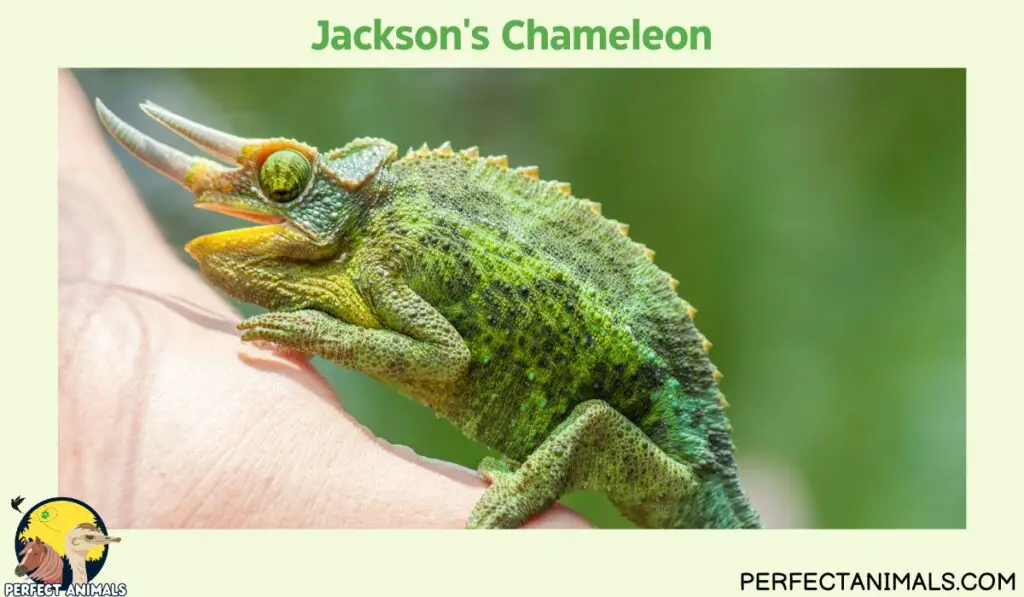
Appearance – Male Jackson’s Chameleons grow up to 13-19 inches long, while females reach 10-13 inches.
They have a distinctive tri-horned look with horns on the nose and above each eye.
Their color is usually bright green but they can camouflage themselves by changing color.
Behavior – Jackson’s Chameleons are arboreal and prefer shady tree canopies.
They are generally docile but can become defensive when threatened.
Males initiate elaborate threat and mating rituals including color changes, inflating the throat, and raising forelegs.
Diet – In the wild Jackson’s Chameleons eat small insects, centipedes, millipedes, spiders, and other invertebrates.
Habitat– They prefer tropical forests and mountainous regions with ample vegetation and tree cover.
They do well in captivity in planted, humid enclosures.
Care – Proper captive care includes providing warmth, humidity, climbing areas, and misting. Avoiding dehydration is important.
Lifespan – With attentive care, captive Jackson’s Chameleons can live 8-10 years.
You May Also Like – Are Pied Ball Pythons Right for You?
Mourning Gecko
The Mourning Gecko, scientifically known as Lepidodactylus lugubris, is a fascinating and diminutive reptile native to Southeast Asia and the Pacific Islands.
These geckos are quite unique in various aspects of their life and behavior.
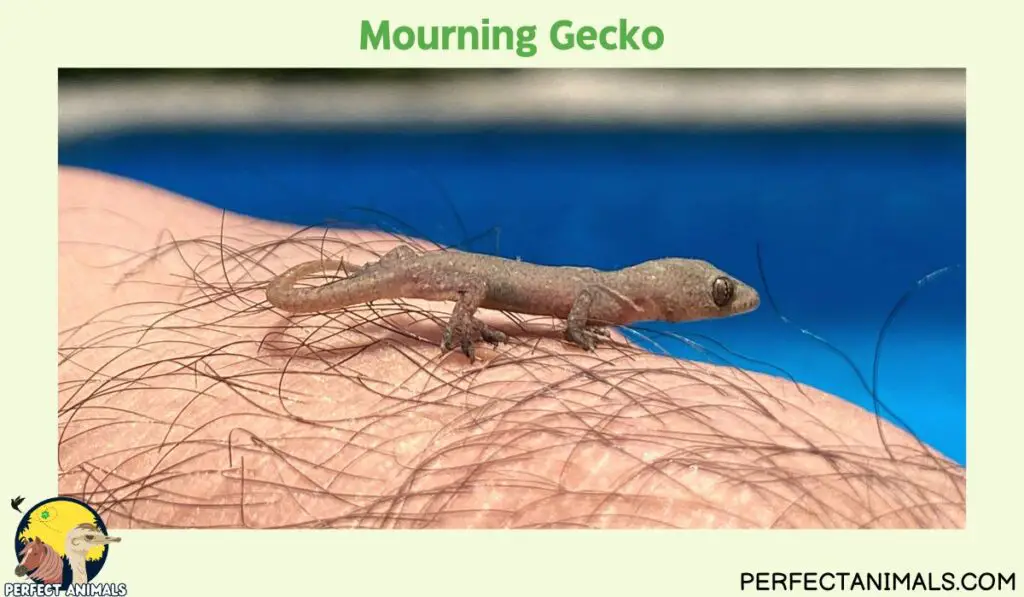
Appearance – Mourning Geckos are among the smaller gecko species, typically measuring 2-4 inches (5-10 cm) in length.
They have slender bodies with relatively short legs.
Their skin is covered in tiny granular scales, giving them a translucent appearance, and their predominant color is a pale grayish-white.
Habitat – Mourning Geckos are arboreal creatures, which means they prefer living in trees or lower vegetation like bushes and shrubs.
Their adaptability allows them to inhabit a range of environments, from forests and grasslands to agricultural areas.
Behavior – Nocturnal by nature, Mourning Geckos are most active during the night.
While they are usually quite docile towards humans, they are not inclined to be frequently handled as it can be stressful for them.
Instead, they are better suited to being observed.
One fascinating feature of these geckos is their ability to reproduce parthenogenetically, meaning females can give birth without mating with a male.
Diet – Mourning Geckos are insectivores, relying on a diet of small insects and spiders.
Care – In captivity, providing a warm, humid environment with a basking area at around 80°F (27°C) is essential for their well-being.
They need ample climbing opportunities and a tall glass enclosure with front and top ventilation.
It’s crucial to include large leaves and plants to catch water droplets when the enclosure is sprayed, as Mourning Geckos are sensitive to dehydration and require a source of water.
Lifespan – With proper care, these geckos may live up to 6-8 years.
However, it’s crucial to ensure that captive specimens are obtained from responsible breeders, as they are considered invasive in some regions like Hawaii, where they can escape from captivity and harm native wildlife.
Jackson’s Chameleons make fascinating display pets but should be captive-bred. Invasive populations should not be allowed to spread.
You May Also Like – Albino Ball Python
Northern Blue-tongued Skink
The Northern Blue-tongued Skink, scientifically referred to as Tiliqua scincoides intermedia, is a robust and sizeable skink native to the Northern Region of Australia.
These unique reptiles are known for their distinctive appearance and behavior.
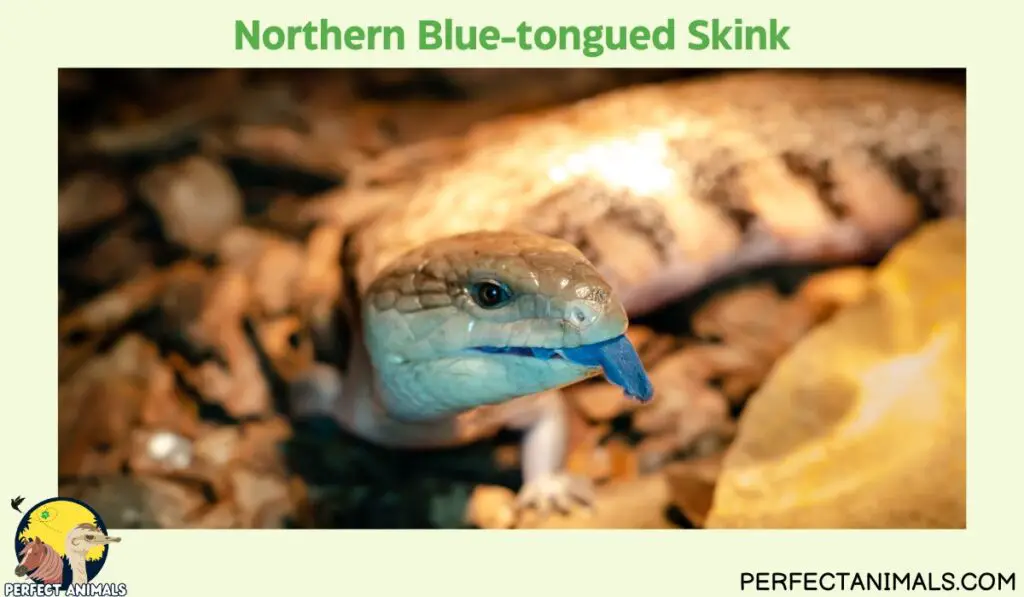
Appearance – Northern Blue-tongued Skinks are the largest and heaviest among the blue-tongued lizard family, reaching lengths of up to 24 inches (61 cm).
They sport a striking coloration with bright orange to soft peachy orange, or even yellowish tones along their sides and back, complemented by a lighter, creamier color on their bellies.
Habitat – These skinks are almost exclusively found in the Northern Region of Australia, where they inhabit a variety of ecosystems, including woodlands, grasslands, and deserts.
Behavior – Northern Blue-tongued Skinks are diurnal and typically display docile behavior towards humans.
However, when threatened, they can be quite defensive. They are primarily ground-dwellers and are often found beneath the shelter of large trees.
One of their most intriguing features is their blue tongue, which serves as a warning to potential predators.
Diet – These skinks are omnivores, feeding on a broad range of foods, including insects, snails, fruits, berries, wildflowers, and even carrion.
Care – In captivity, it is crucial to provide a warm, humid environment with a basking area of around 80°F (27°C) and plenty of climbing opportunities.
Their enclosure should offer hiding spots and a substrate suitable for burrowing.
Access to water is essential to prevent dehydration.
Lifespan – With proper care, Northern Blue-tongued Skinks can live up to 20 years.
They are popular as pets and are frequently featured in zoos and educational programs due to their gentle nature and distinctive appearance.
Azure-tailed Skink
The Azure-tailed Skink, scientifically known as Emoia impar, is a species of skink primarily distributed throughout the Pacific, particularly in Polynesia and Micronesia.
These skinks possess several unique characteristics and adaptations that make them intriguing reptiles.
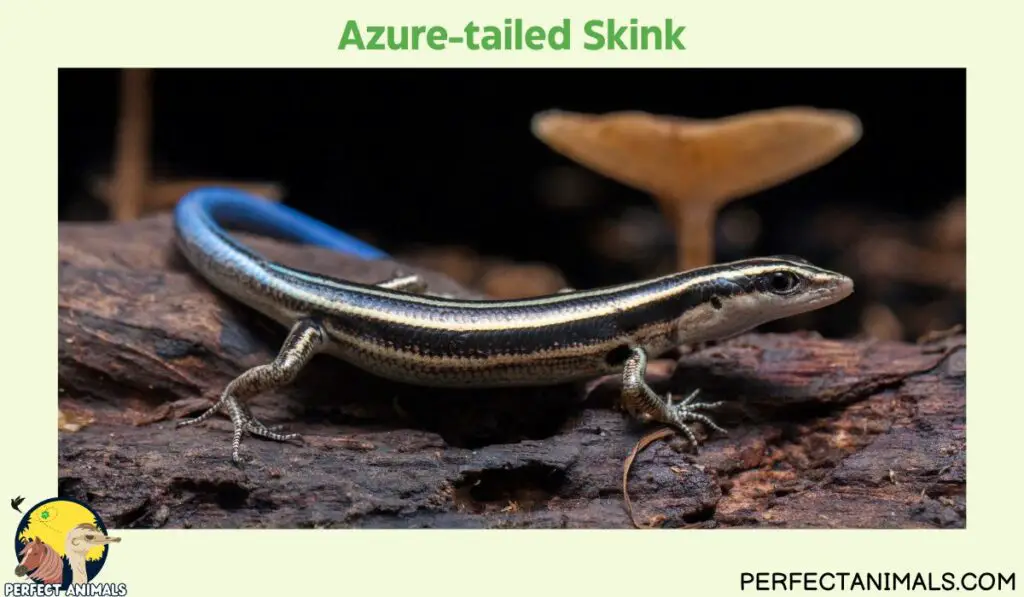
Appearance – Azure-tailed Skinks are relatively small, typically measuring 4-5 inches (10-13 cm) in length.
They have smooth scales and a conical head. Their dorsal surface is brownish to bronze-colored, while the striking feature is their bluish tail, which is more than 1½ times the length of the skink’s head and body.
The ventral surface is whitish-gray.
Habitat – Azure-tailed Skinks are commonly found in forested habitats and are known to be arboreal, meaning they live in trees.
They are native to the Pacific, specifically in Polynesia and Micronesia, and have been introduced to Hawaii.
Behavior – These skinks are diurnal and similar to other species, they are generally docile toward humans but can become defensive when feeling threatened. They prefer shady environments under large trees.
Diet – Azure-tailed Skinks are insectivores, primarily feeding on small insects and spiders.
Care – In captivity, providing a warm, humid environment with a basking area of around 80°F (27°C) and ample climbing opportunities is essential.
They require an enclosure with hiding spots and a substrate suitable for burrowing. Adequate access to water is crucial to prevent dehydration.
Lifespan – Azure-tailed Skinks, if well cared for, can live up to 6-8 years.
It’s worth noting that while these skinks were once present in the Hawaiian Islands, they have become rare or possibly extinct due to factors like competition from other species and predation by introduced animals like mongooses.
You May Also Like – Blue Eyed Leucistic Ball Pythons
Green Anole or Carolina Anole
The Green Anole, scientifically known as Anolis carolinensis, is a tree-dwelling anole lizard native to the southeastern United States.
These lizards are famous for their vibrant appearance and unique behaviors.
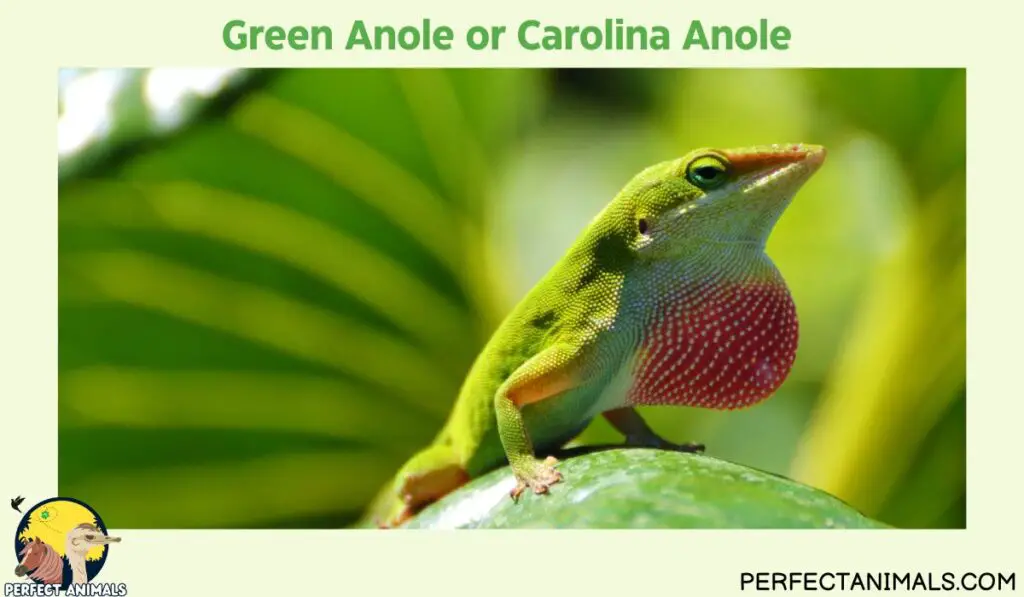
Appearance – Green Anoles are small to medium-sized lizards with slender bodies and long, skinny tails, which can be twice as long as the rest of their bodies.
They have sharp noses, narrow heads, and toes equipped with adhesive pads for climbing.
Males are about fifteen percent larger than females and exhibit variations in throat fan coloration.
Adult females have smaller dewlaps, which they rarely use during encounters with other anoles and never use during courting.
Habitat – Green Anoles are found in the southeastern United States, spanning from southern Virginia to the Florida Keys and west to Central Texas and Oklahoma.
They are arboreal and prefer living in trees, and shrubs, and can even be found on walls and fences.
Behavior – These diurnal lizards are generally docile toward humans but can display defensive behaviors when threatened.
They are ground-dwelling and commonly take shelter under the canopies of large trees.
One of their most remarkable features is their ability to change color, influenced by factors like temperature, humidity, health, and mood.
Diet – Green Anoles are insectivores, preying on a variety of insects, spiders, and other invertebrates.
Care – In captivity, Green Anoles thrive in a warm, humid environment with a basking area at around 80°F (27°C) and plenty of climbing opportunities.
They require a spacious enclosure with hiding spots and a substrate that allows for burrowing.
Providing a source of water is crucial to prevent dehydration.
Lifespan – With proper care, Green Anoles can live up to 5-8 years.
Green Anoles are commonly kept as pets due to their unique appearance and manageable size.
However, it’s important to ensure that captive specimens are responsibly sourced.
Despite their nickname “chameleons” for their color-changing ability, they are not true chameleons.
Brown Anole
The Brown Anole, scientifically referred to as Anolis sagrei, is a small to medium-sized lizard native to the Caribbean and introduced to various regions, including the southeastern United States and the Pacific Islands.
These adaptable lizards have established themselves in new environments and have distinct characteristics.
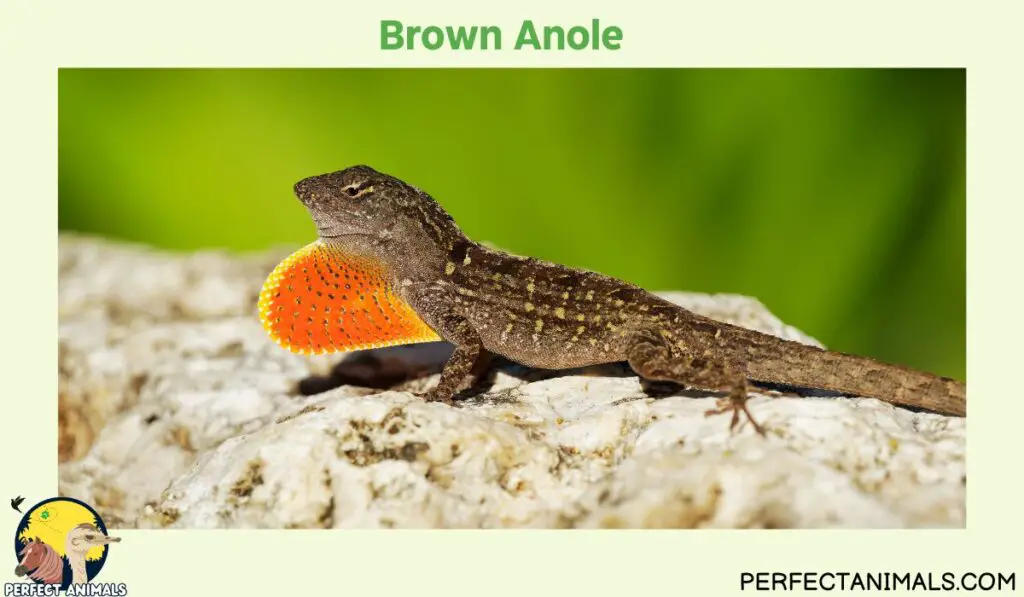
Appearance – Brown Anoles are relatively small, typically measuring 5-8.5 inches (12-21 cm) in length.
They are typically brown to grayish in color, often displaying whitish or yellowish patterning on their backs.
Males, in particular, have an orange or red throat fan with a white edge.
Habitat – These lizards are found in a variety of habitats, including forests, grasslands, and urban areas. They are arboreal and can be found in trees, shrubs, walls, and fences.
Behavior – Brown Anoles are diurnal and are generally docile towards humans, but like most reptiles, they can become defensive when they feel threatened.
They are ground-dwelling and often seek shelter beneath the canopies of large trees.
Similar to Green Anoles, they possess the ability to change color, with shifts influenced by factors such as temperature, humidity, health, and mood.
Diet – Brown Anoles are insectivores, primarily preying on a wide variety of insects, spiders, and other invertebrates.
Care – In captivity, Brown Anoles thrive in a warm, humid environment with a basking area at around 80°F (27°C) and ample climbing opportunities.
Their enclosure should offer hiding spots and a substrate suitable for burrowing.
Lifespan – With proper care, Brown Anoles can live up to 5-8 years.
They are considered an invasive species in some areas, such as Florida, where they can outcompete and displace native species, including the Green Anole (Anolis carolinensis).
You May Also Like – Turtles Without Shells
Final Thoughts
The Hawaiian islands are a tropical paradise brimming with remarkable biodiversity.
Among the jewels of Hawaii’s animal species are its diverse assemblage of native and introduced lizards.
As we’ve explored, Hawaiian lizards range from tiny geckos to the massive Tokay Gecko and come in a kaleidoscope of colors.
The lizards of Hawaii showcase an impressive array of adaptations for surviving on these remote volcanic islands.
Specialized traits like sticky toe pads, color-changing skin, and sharp claws for climbing help Hawaiian lizards thrive in trees, on the ground, and among rocky coastlines.
Their behaviors and defensive displays are just as fascinating to observe.
For visitors passionate about reptiles, looking for Hawaiian lizards can take any island adventure to the next level.
Hiking through rainforests while scanning branches and leaf litter for geckos and skinks adds a new dimension to exploring Hawaii’s beautiful landscapes.
Whether lounging on a beach, strolling through a garden, or taking a coastal hike, there are bound to be intriguing lizard species waiting to be discovered across the islands.
We hope this article has provided a helpful introduction to the diverse community of lizards that call Hawaii home.
Learning to identify its unique reptiles helps deepen our appreciation for Hawaii’s fragile island ecosystems.
Resources – (for further reading)
Hawaii Nature Journal – Lizards
Herpedia.com – Lizards of Hawaii
University of Hawaii – Azure-tailed lizard species rediscovered on Hawaiʻi Island

Maya’s love for reptiles started in her teens with a pet snake. It grew into a collection of geckos, snakes, and more. She also cares for birds and cats, making a cozy home menagerie.
